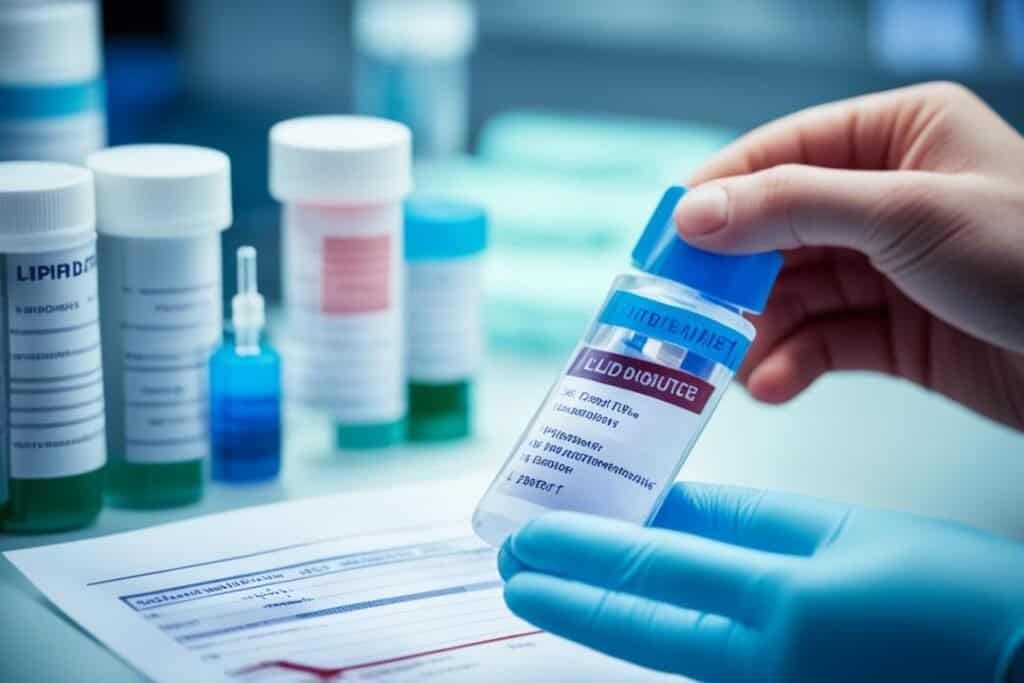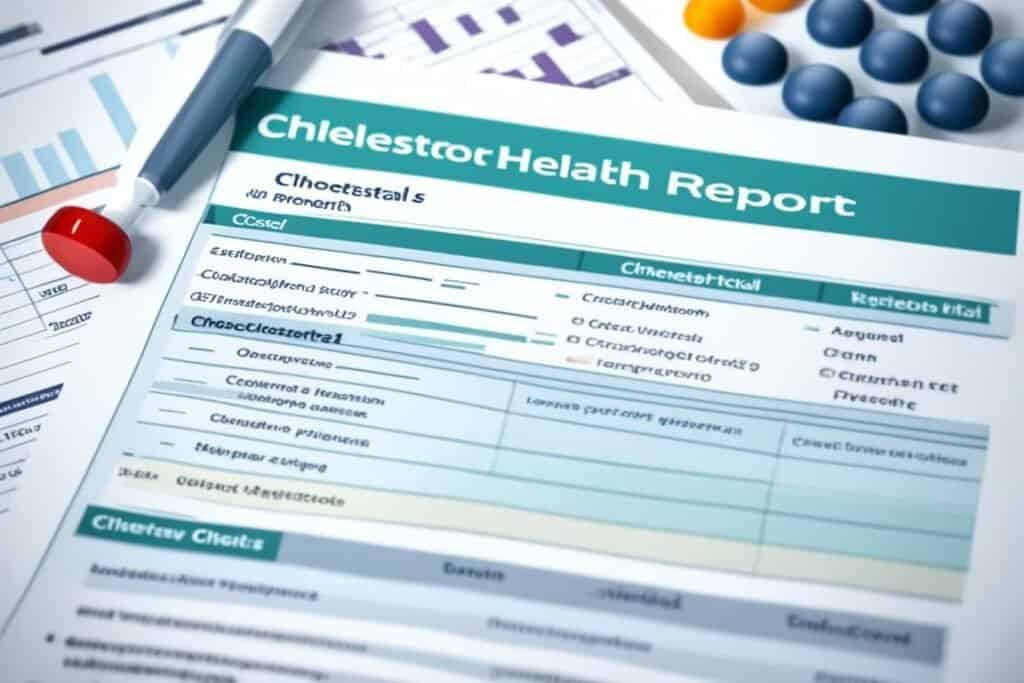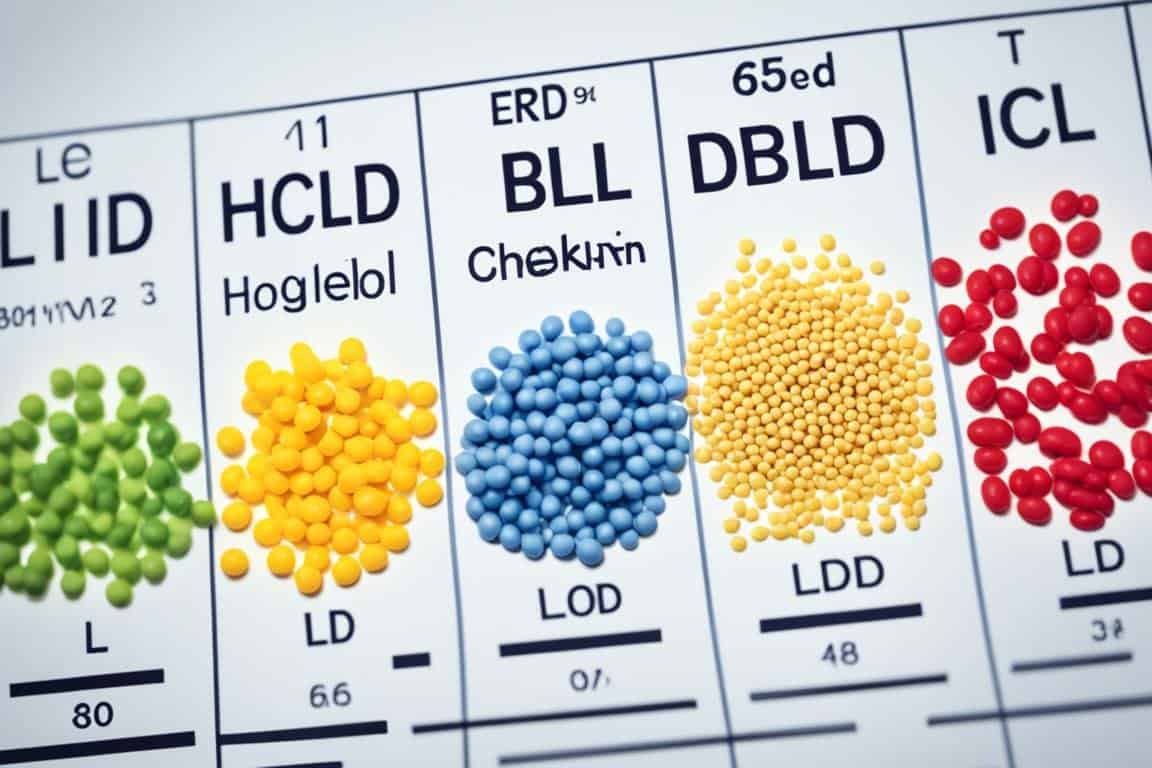A lipid profile test, also known as a cholesterol test or lipid panel, is a blood test that measures the levels of cholesterol and triglycerides in your blood. This test is used to assess your risk of developing cardiovascular disease and to monitor the effectiveness of cholesterol-lowering treatments. The results of a lipid profile test provide information about your total cholesterol, LDL cholesterol (the “bad” cholesterol), HDL cholesterol (the “good” cholesterol), and triglyceride levels. It is an important tool in evaluating your heart health and determining if further action is necessary to reduce your risk factors.
Key Takeaways:
- A lipid profile test measures the levels of cholesterol and triglycerides in your blood.
- It helps assess your risk of cardiovascular disease and monitor the effectiveness of cholesterol-lowering treatments.
- The test provides information about total cholesterol, LDL cholesterol, HDL cholesterol, and triglyceride levels.
- It is an important tool in evaluating heart health and determining necessary actions to reduce risk factors.
- Regular lipid profile testing is essential for maintaining healthy lipid levels and reducing the risk of heart disease.
What Does a Lipid Profile Test Measure?
A lipid profile test measures several factors related to your lipid levels. These include total cholesterol, LDL cholesterol, HDL cholesterol, and triglycerides. Let’s take a closer look at each of these components:
- Total cholesterol: This is the sum of all the cholesterol in your blood. It provides an overall picture of your cholesterol levels and can help determine your risk of developing cardiovascular disease.
- LDL cholesterol: Commonly known as the “bad” cholesterol, high levels of LDL cholesterol can contribute to the buildup of plaque in your arteries. This increases the risk of heart disease and other cardiovascular conditions.
- HDL cholesterol: Also known as the “good” cholesterol, HDL cholesterol helps remove LDL cholesterol from the bloodstream. Higher levels of HDL cholesterol are desirable as they help protect against heart disease.
- Triglycerides: Triglycerides are a type of fat that circulates in your bloodstream. Elevated levels of triglycerides can contribute to the development of atherosclerosis, a condition characterized by the buildup of fatty deposits in artery walls.
The results of a lipid profile test are usually interpreted based on standardized ranges. These ranges help determine if your lipid levels are within a healthy range or if further action is needed to manage your cholesterol levels. Proper interpretation of your lipid profile results is crucial in understanding your cardiovascular health and implementing appropriate measures to maintain optimal lipid levels.
To help you better understand the interpretation of lipid profile results, let’s take a look at the recommended ranges for each component:
| Lipid Component | Desirable Range | Undesirable Range |
|---|---|---|
| Total Cholesterol | Below 200 mg/dL or 5.18 mmol/L | Above 240 mg/dL or 6.18 mmol/L |
| LDL Cholesterol | Below 100 mg/dL or 2.6 mmol/L | Above 190 mg/dL or 4.9 mmol/L |
| HDL Cholesterol | Above 60 mg/dL or 1.5 mmol/L | Below 40 mg/dL or 1 mmol/L (men) Below 50 mg/dL or 1.3 mmol/L (women) |
| Triglycerides | Below 150 mg/dL or 1.7 mmol/L | Above 500 mg/dL or 5.6 mmol/L |
It is important to note that these ranges may vary slightly depending on the specific guidelines used by your healthcare provider or laboratory. Discussing your lipid profile results with your healthcare provider will allow for a more comprehensive interpretation tailored to your individual health needs. A lipid profile test provides valuable information about your cardiovascular health and plays a crucial role in managing your cholesterol levels effectively.
Who Should Get a Lipid Profile Test?
Regular cholesterol testing is an essential part of monitoring your heart health and managing your cholesterol levels. According to the National Heart, Lung, and Blood Institute (NHLBI), it is recommended that individuals have their first cholesterol screening between the ages of 9 and 11. Afterward, cholesterol screenings should be repeated every five years. However, the frequency of cholesterol testing may vary based on individual risk factors and medical history. Here’s a general guideline for when you should consider getting a lipid profile test:
- Children and teenagers: It is advisable for children and teenagers to have their first cholesterol screening between the ages of 9 and 11. This initial screening can help identify any potential risk factors for cardiovascular disease early on.
- Adults: For most adults, cholesterol screenings should occur every five years. This can help monitor any changes in cholesterol levels and assess the risk of developing heart disease. However, certain factors may warrant more frequent testing:
- Age: For men aged 45 to 65 and women aged 55 to 65, cholesterol screenings should occur every 1 to 2 years. This is because the risk of heart disease increases with age.
- Family history: If you have a family history of high cholesterol or heart disease, it is important to undergo regular cholesterol testing to assess your own risk.
- Health conditions: Individuals who are overweight, physically inactive, or have diabetes are more likely to have high cholesterol levels and should have regular cholesterol tests.
It is important to consult with your healthcare provider to determine the appropriate frequency for lipid profile testing based on your individual risk factors and medical history.
Frequency of Lipid Profile Testing Based on Age and Risk Factors
| Age Group | Frequency of Testing |
|---|---|
| Children and teenagers (9-11 years) | First screening, repeated every five years |
| Adults (average risk) | Every five years |
| Men (aged 45-65) | Every 1 to 2 years |
| Women (aged 55-65) | Every 1 to 2 years |
| People over 65 | Annually |
| Individuals with family history, obesity, inactivity, or diabetes | More frequent testing as advised by healthcare provider |
| Individuals undergoing cholesterol treatment | As recommended by healthcare provider |

Interpreting Lipid Profile Results
When you receive the results of your lipid profile test, they will typically be provided in milligrams per deciliter (mg/dL) or millimoles per liter (mmol/L) depending on your country. These results play a crucial role in determining if your cholesterol levels are within a healthy range or if further action is needed. Understanding how to interpret these results is essential for managing your heart health effectively.
Let’s take a closer look at the key lipid profile measurements and their recommended ranges:
- Total Cholesterol: Total cholesterol reflects the sum of all the cholesterol in your bloodstream. Desirable levels are below 200 mg/dL or 5.18 mmol/L, while levels above 240 mg/dL or 6.18 mmol/L are considered high.
- LDL Cholesterol: LDL cholesterol is often referred to as the “bad” cholesterol because high levels can lead to the buildup of plaque in your arteries. Ideally, your LDL cholesterol should be below 100 mg/dL or 2.6 mmol/L. Levels above 190 mg/dL or 4.9 mmol/L are classified as very high.
- HDL Cholesterol: HDL cholesterol is known as the “good” cholesterol because it helps remove LDL cholesterol from the bloodstream. Optimal levels for HDL cholesterol should be above 60 mg/dL or 1.5 mmol/L. Levels below 40 mg/dL or 1 mmol/L in men and below 50 mg/dL or 1.3 mmol/L in women are considered poor.
- Triglycerides: Triglycerides are a type of fat that can contribute to the development of atherosclerosis. Desirable levels for triglycerides are below 150 mg/dL or 1.7 mmol/L, while levels above 500 mg/dL or 5.6 mmol/L are considered very high.
By comparing your lipid profile results to these recommended ranges, you can gain insights into your cardiovascular health. However, it’s important to consult with your healthcare provider to fully understand the implications of your specific results. Your healthcare provider will help you interpret the numbers in the context of your overall health, medical history, and individual risk factors.
Based on your lipid profile results, your healthcare provider may recommend lifestyle modifications, such as adopting a heart-healthy diet, increasing physical activity, and weight management techniques. In some cases, medication may also be prescribed to help manage your cholesterol levels effectively.
Remember, regular lipid profile testing and close communication with your healthcare provider are key to maintaining optimal heart health. Together, you can develop a personalized plan to manage your cholesterol levels and reduce your risk of cardiovascular disease.

Conclusion
A lipid profile test is an important tool to assess your cholesterol levels and evaluate your risk of developing cardiovascular disease. By measuring total cholesterol, LDL cholesterol, HDL cholesterol, and triglycerides, this test provides valuable information about your lipid levels and helps determine if further action is necessary to manage your cholesterol effectively. Regular lipid profile testing is essential for monitoring your heart health and evaluating the effectiveness of any cholesterol-lowering treatments you may be undergoing.
It is crucial to stay informed about your lipid profile results and work closely with your healthcare provider. By understanding your results and discussing them with your doctor, you can take proactive steps to maintain healthy lipid levels and reduce your risk of heart disease and other cardiovascular conditions.
Make sure to schedule regular lipid profile tests as advised by your healthcare provider and follow their recommendations for managing your cholesterol levels. By prioritizing your heart health and taking the necessary steps, you can lead a healthier life and protect yourself from the risks associated with high lipid levels. Your heart will thank you for it.

